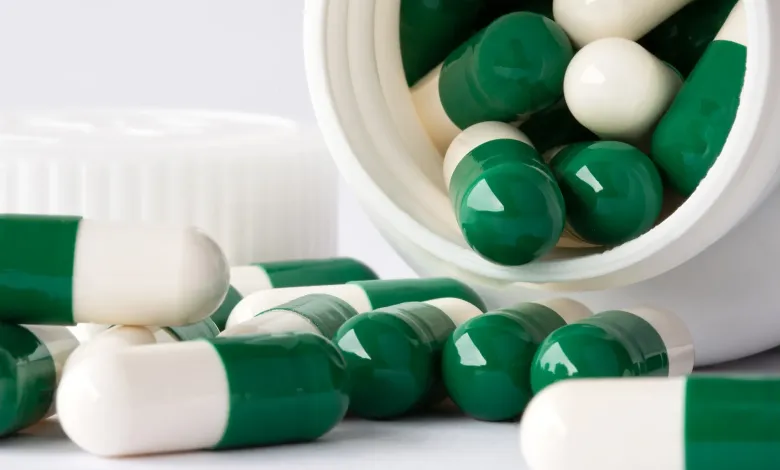
Convincing children to take their medication could become a lot easier. Researchers at Texas A&M University are developing a new method of pharmaceutical 3D printing for pediatric patients. They hope to print precisely dosed tablets in child-friendly shapes and flavors. While the effort is focused on two drugs for AIDS in children, the process could be used to print other drugs, including for adults.
Researchers from the UK, Australia and the University of Texas at Austin are also in the early stages of 3D printed drug projects. It’s a promising venture in the broader push for “personalized medicine,” where treatments are tailored to each patient’s individual needs.
Mass drug production is not geared toward pediatric patients, who often require different dosages and combinations of medications as they grow. Therefore, tablets for adults are often crushed and dissolved in liquid – called compounding – and given to children. However, this can affect drug quality and make dosing less accurate.
“Suppose the child needs 3.4 milligrams and there is only a 10-milligram tablet available. “If you switch the dosage from solid to liquid, how do you make sure it contains the same amount of drug?” said co-principal investigator Mansoor Khan, PhD, professor of pharmaceutical sciences at Texas A&M.
Most pharmacies lack the equipment to test the quality of compounded drugs, he said. And liquefied medications taste bad because the pill shell has been sanded down.
“Taste is a big issue,” said Olive Eckstein, MD, assistant professor of pediatric hematology-oncology at Texas Children’s Hospital and Baylor College of Medicine, who is not involved in the research. “Hospitals sometimes delay discharge of pediatric patients because they cannot take their medications orally and must receive intravenous administration.”
Updating pharmaceutical 3D printing
The FDA approved a 3D-printed drug in 2015, but progress has stalled since then, largely because the method relied on solvents to bind drug particles together. Over time, solvents can affect shelf life, said co-principal investigator Mathew Kuttolamadom, PhD, associate professor of engineering at Texas A&M.
The Texas A&M team uses a different method, without solvents. First, they make a powder mixture of the drug, a biocompatible polymer (e.g. lactose), and a gloss, a pigment that colors the tablet and allows heat to be absorbed. Flavorings can also be added. The mixture is then heated in the printing chamber.
“The polymer should melt just enough. This gives the tablet structural strength. But it should not melt too much, which can cause the drug to dissolve into the polymer,” said Kuttolamadom.
The tablets are refined through precise applications of laser heat. Using computer-aided design software, researchers can create tablets in almost any shape, such as “stars or teddy bears,” he said.
After many trials, researchers have printed tablets that don’t break apart or get soaked.
Now they are testing how different laser scanning speeds affect the structure of the tablet, which in turn affects the speed at which drugs dissolve. By slowing down the laser, more energy is delivered, strengthening the tablet structure and making medications dissolve more slowly, allowing them to be released in the body for longer.
The researchers hope to develop machine learning models to test different laser speed combinations. Eventually, they could develop tablets that combine drugs with different dissolution rates.
“The external could be a rapid release, and the internal could be an extended or sustained release or even a completely different drug,” Kuttolamadom said.
Older patients who take a lot of medication every day could benefit from the technology. “Personalized pills could be printed at your local pharmacy,” he said, “even before you leave the doctor’s office.”
Subscribe to AM Chronicle Newsletter to stay connected: https://bit.ly/3fBZ1mP
Follow us on LinkedIn: https://bit.ly/3IjhrFq
Visit for more interesting content on additive manufacturing: https://amchronicle.com
Columbia University engineers have successfully 3D-printed an ultrarealistic three-course meal using a novel laser cooking…
Digital Catapult has launched an accelerator program to strengthen the industrial supply chain resilience of…
Lyten has officially launched two new products based on its advanced 3D Graphene platform, designed…
Bahrain's Arab Shipbuilding and Repair Yard (ASRY) has entered a strategic partnership with the global…
Aerospace giant Airbus has significantly expanded its use of additive manufacturing (AM), confirming it is…
The U.S. Navy’s Maritime Industrial Base (MIB) Program, General Dynamics Electric Boat, and Lincoln Electric…
This website uses cookies.